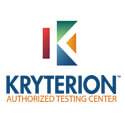AWS SysOps Administrator
About AWS SysOps Administrator Course
The AWS Certified SysOps Administrator certification course helps you establish your knowledge and proficiency in operating, managing and deploying scalable systems on AWS cloud platforms. As a key prerequisite to the AWS DevOps Engineer certificate, the AWS Certified SysOps Administrator certification training helps you to migrate on-premise apps to the AWS platform, control data flow to-and-from AWS architecture and master the AWS management console, optimize operational cost and improve your expertise in leveraging AWS services and resources in an efficient manner.
The AWS Certified SysOps Administrator program provides professionals with hands-on exposure to scalable AWS cloud platforms rendering you with technical knowledge to deploy, manage and operate fault tolerant systems on AWS platform. The course empowers a professional to select the most cost-effective and appropriate cloud services and manage full-scale operations on the AWS architecture. It prepares you for the AWS SysOps Associate exam.
You learn to assess several CloudWatch metrics. Gain good knowledge of cost-optimization practices and cloud deployment. You learn data storage and management using EBS, Glacier, S3, data lifecycle, EC2 and get a good view of AWS security and networking.
Who Should Attend AWS SysOps Administrator Course
The AWS SysOps Administrator program is aimed at systems administrators having a minimum of one-year of experience in building or managing applications in cloud.
- AWS beginners.
- Systems administrators
- Programmers Interested to learn deploying applications on the AWS platform
Why AWS SysOps Administrator Course
- AWS certifications are rated as the most esteemed IT Certifications
- Global cloud market is expected to grow to $ 241 billion by 2025
- Average annual pay of an AWS Certified SysOps Administrator is around $112k
Post completing this course, you achieve the following:
- Deploy scalable fault tolerant systems on the AWS platform
- Migrate existing on-premise applications to the AWS platform
- Ensure data security and integrity on AWS platform
- Select appropriate AWS services on the basis of security or data requirements
- Identify apt use of AWS best practices
- Learn about operational cost control factors
- Recognized worldwide
- Improve career prospects and higher pay
AWS SysOps Administrator Course Objectives
After the completion of Tech-Act’s AWS Certified SysOps Administrator certification training, you can:
- Create repeatable and automatable deployments of systems and networks on AWS platforms
- Work with AWS tools and features pertaining to deployment and configuration
- Use tricks to configure and deploy new systems on AWS platform
Course Prerequisites
To enroll for the AWS Certified SysOps Administrator certification, you ought to meet the following requirements:
- AWS Technical Essentials training or hands-on experience operating AWS -based applications
- Experience in operating, maintaining and provisioning systems that run on AWS
- Expertise in defining a solution to be operated on the AWS platform
- Skills to work with AWS deployments
AWS SysOps Administrator Course Benefits
Post completing this course, you achieve the following:
- Deploy scalable fault tolerant systems on the AWS platform
- Migrate existing on-premise applications to the AWS platform
- Ensure data security and integrity on AWS platform
- Select appropriate AWS services on the basis of security or data requirements
- Identify apt use of AWS best practices
- Learn about operational cost control factors
- Recognized worldwide
- Improve career prospects and higher pay





























